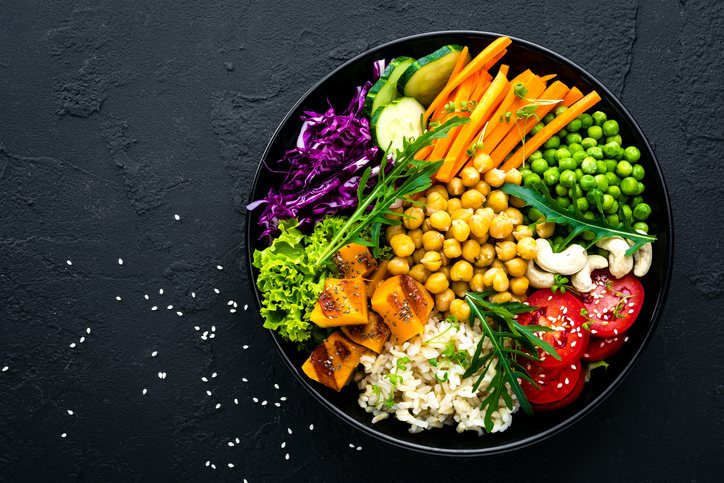By Isabelle Huot
A bowlful of goodness needn’t be just for mornings—you can also create a meal-in-a-bowl for lunch or supper that’s both delicious and nutritious
In the Morning
Combine fruit, seeds, and a source of protein such as yogourt, silken tofu, milk, or enriched soy beverage. The ideal breakfast bowl contains 15 to 20 grams of protein and provides fibre. Com- pared to a smoothie containing the same ingredients, a bowl is less liquid and is eaten with a spoon, which promotes a sense of fullness.
Winning Combos:
- Plain yogourt, caramelized apples, pecans, and maple syrup
- Silken tofu, soy beverage, berries, and wheat germ
- Vanilla yogourt, sliced strawberries, basil, and hemp seeds
- Overnight oats (no cooking needed), sliced banana, walnuts, and honey
- Chia pudding (soy beverage and chia seeds), ground cherries, and toasted almonds
For Lunch or Supper
The possibilities are nearly endless. A complete bowl will contain a grain (quinoa, soba noodles, brown rice), a source of animal or plant protein (tofu, tempeh, edamame or other legumes), and vegetables. Top it off with a vinaigrette dressing or yogourt sauce. A bowl is an excellent way to use up leftovers and reduce food waste.
Bowls of Bounty:
- Soba noodles, grilled tofu (marinated with tamari sauce, ginger, and garlic), grated carrots, spinach, and peanut sauce
- Quinoa, kidney beans, corn kernels, avocado, coriander, and canola oil and lime juice dressing
- Brown rice, chicken strips, mango chunks, red peppers, lamb’s lettuce, and olive oil and white balsamic vinegar dressing
- Red potatoes, tuna, black olives, artichokes, roasted peppers, and herb dressing
- Sushi rice, salmon, cucumber, avocado, edamame, and creamy dressing (mayo, yogourt, and sriracha)
Perfect Partners
Some foods are especially suited to being paired together to maximize their nutritional value.
- Legumes pair well with vegetables that are high in vitamin C, such as broccoli, peppers, tomatoes, and cabbage; vitamin C boosts the absorption of the iron in legumes.
- Oil is a good match for vegetables high in vitamins A and K, such as carrots, squash, and spinach; these fat-soluble vitamins are absorbed better when combined with fat.
- Rich in vitamin C, citrus fruits and strawberries maximize the absorption of iron in oats or other cereals.






